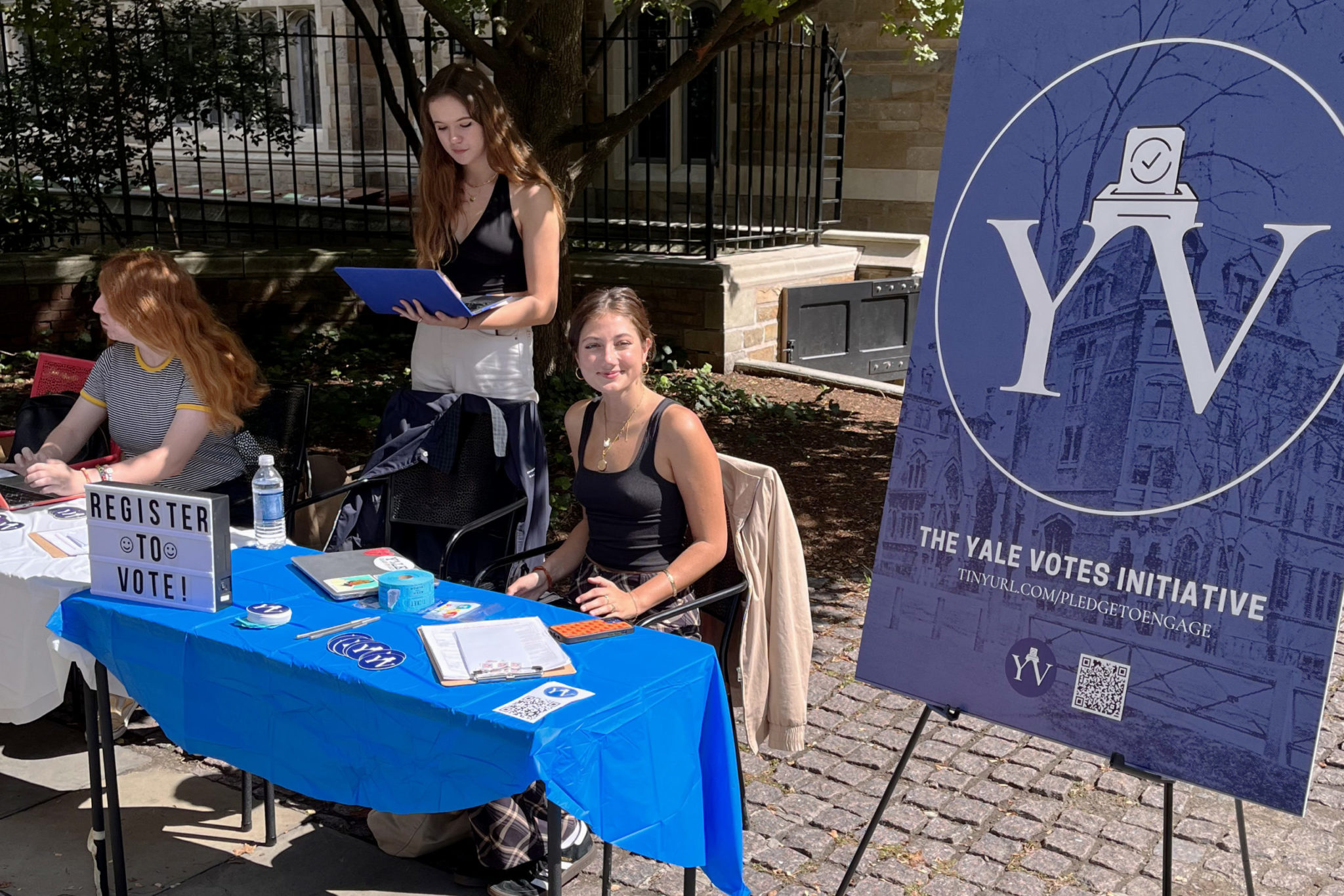Yale Votes pushes for voter participation with new Saybrook Votes competition
Saybrook College’s Class of 2025 wins this fall’s Saybrook Votes with just over 40 percent of eligible students registered to vote.

Courtesy of Sophie Kane
As midterm elections approach, Americans are faced with the choice to vote or remain silent.
This fall, Yale Votes — a non-partisan student organization — aided in the democratic process by rolling out a new pilot program: Saybrook Votes. The 10-day competition focused on increasing voter participation in Saybrook College, spanning from Oct. 3 to Oct. 12.
The Class of 2025 won this year’s competition, with 41.73 percent of eligible students reporting they are registering to vote. Although less than half of each class year reported being registered this round, Yale Votes organizers hope that expanding this program will increase civic engagement.
“Vote,” said Yale Votes’ Saybrook Ambassador Roy Kohavi ’26. “It’s so simple. Make your voice heard. It is our right. This is something we are eligible to do. How can we not do it?”
25 percent of eligible voters in Saybrook informed Saybrook Votes of their registration status, but there may have been some students who did not fill out the form. Due to the nature of the pilot program, there is no prior data to compare this to.
Yale Votes was inspired by the Bulldog Ballot Challenge. That competition, conducted in 2020 between sports teams, succeeded in registering 100 percent of all eligible student-athletes and coaches.
Yale Votes wanted to create a similar competition to increase voter involvement, chair of Yale Votes Sophie Kane ’24 told the News.
“Because we have such a short crunch time between registering and also requesting your absentee ballot we weren’t able to really hype this challenge before it started,” vice chair of Yale Votes Nikita Paudel ’25 said.
The challenge occurred very close to the suggested deadline to mail in absentee ballots, which is Oct. 16.
The quick turnaround from the conception of the challenge to its actualization meant there was not enough time to create an inter-college competition, which was their ultimate goal.
“The goal of Saybrook Votes, and what will be the goal of the campus-wide program, is to register 100 percent of student voters,” Kane wrote in an email to the News.
Instead, Yale Votes focused on Saybrook College because Saybrook had the most people fill out Yale Votes’ pledge to engage form.
As a pilot program, Yale Votes plans to analyze the success of Saybrook Votes to improve and expand it throughout Yale College.
“The Saybrook Votes competition engaged Saybrook class years in a friendly competition, each one competing to achieve the highest level of voter registration among eligible voters,” Kane wrote.
Unfortunately, the program is not reaching as many people as Yale Votes would like. In particular, there is a much lower rate of registration among upperclassmen compared to underclassmen.
“Juniors and seniors live off campus, so it’s hard to target them,” Paudel said. “People don’t read their emails either and a lot of stuff has been us emailing and putting up posters; they’re just not on campus.”
Nevertheless, Yale Votes and Saybrook votes are unrelenting in their efforts to increase voter turnout.
During midterm elections, Yale Votes focuses on the practicalities of voting, like registering and requesting absentee ballots. When midterms are over, the focus will shift to education, such as “lots of explanations about how voting works and how elections work,” Kohavi said.
Historically, Yale does not have a great voter turnout rate. Whether due to a lack of education on voting or discouraged by the inconvenience, less than 50 percent of students voted in the 2018 midterm elections according to a report published by the National Study of Learning, Voting and Engagement.
“We’re very opinionated people at Yale,” Paudel said. “I would want our opinions to be heard.”
The Class of 2025, this year’s winner of the competition, won a candy apple making night.
In the future, as the competition expands to hopefully include the entire Yale community, Yale Votes hopes to provide bigger prizes with the help of a larger budget.
In Saybrook, 25 percent of the Class of 2026, 41.73 percent of the Class of 2025, 16.67 percent of the Class of 2024 and 10.83 percent of the Class of 2023 reported that they are registered to vote.







